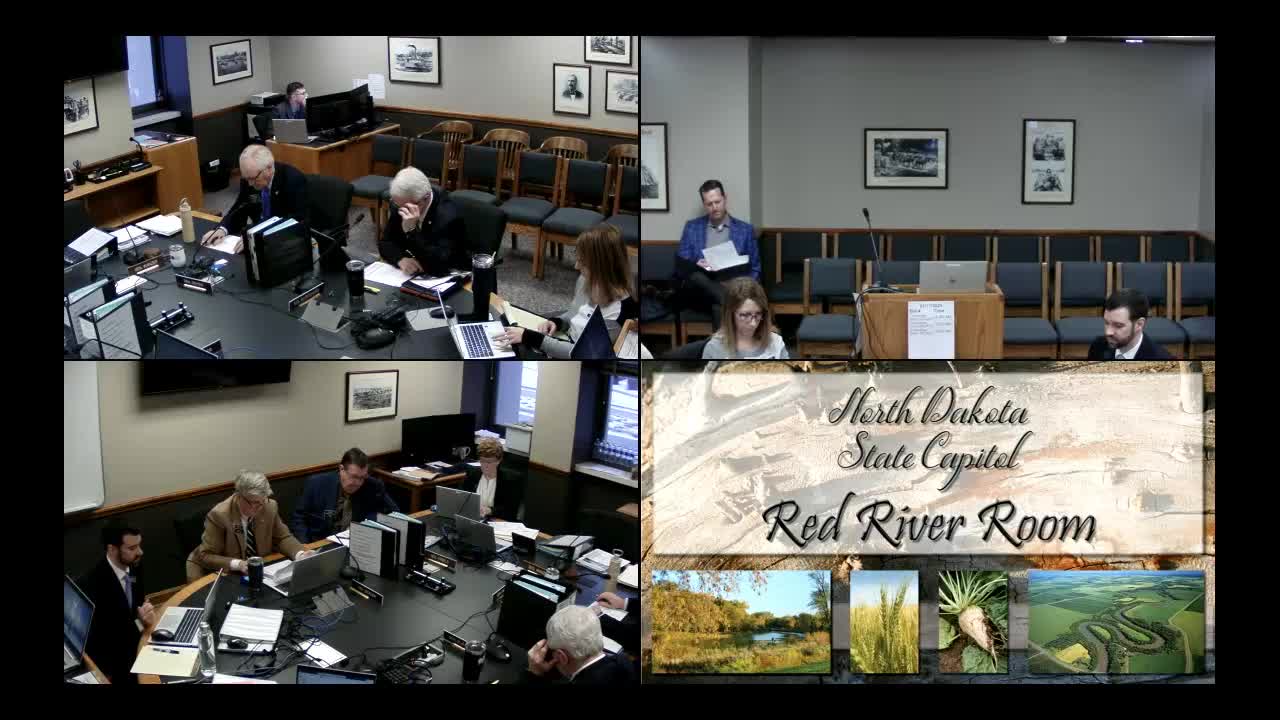State report reveals 375 vacant positions costing $75 million in DHHS alone
January 17, 2025 | Appropriations - Government Operations Division, Senate, Legislative, North Dakota
This article was created by AI summarizing key points discussed. AI makes mistakes, so for full details and context, please refer to the video of the full meeting. Please report any errors so we can fix them. Report an error »

In a recent meeting of the Senate Appropriations - Government Operations Division, the discussion centered around the significant number of vacant positions within state agencies, highlighting a pressing issue for North Dakota's government operations. As the meeting unfolded, it became clear that the state is grappling with a substantial number of unfilled roles, which has implications for budget allocations and agency efficiency.
The report presented indicated that as of December 1, 2024, there were approximately 784 vacant positions across various agencies, amounting to a staggering $162 million in associated costs. Notably, the Department of Health and Human Services (DHHS) accounted for nearly half of these vacancies, with 374 positions unfilled, representing about $75.7 million in potential expenditures. This situation raises questions about the operational capacity of these agencies and the impact on public services.
The discussion also revealed that some positions have remained vacant for extended periods, with some exceeding 17 months. The reasons for these vacancies vary; while some agencies are actively recruiting, others are still in the evaluation phase, unsure of when they might fill these roles. This uncertainty can hinder the agencies' ability to function effectively and meet the needs of the public.
As the committee members reviewed the report, they were encouraged to scrutinize these vacancies closely. They were reminded that understanding the status of these positions could lead to important inquiries about agency budgets and the necessity of maintaining certain roles. The meeting underscored the importance of accountability in government operations, prompting members to consider whether some long-vacant positions should be reevaluated or potentially eliminated.
In conclusion, the Senate Appropriations meeting highlighted a critical challenge facing North Dakota's government: the need to address a significant number of vacant positions that not only strain budgets but also affect the delivery of essential services. As the state moves forward, the discussions from this meeting may pave the way for more strategic hiring practices and budgetary decisions that could enhance operational efficiency and public service delivery.
The report presented indicated that as of December 1, 2024, there were approximately 784 vacant positions across various agencies, amounting to a staggering $162 million in associated costs. Notably, the Department of Health and Human Services (DHHS) accounted for nearly half of these vacancies, with 374 positions unfilled, representing about $75.7 million in potential expenditures. This situation raises questions about the operational capacity of these agencies and the impact on public services.
The discussion also revealed that some positions have remained vacant for extended periods, with some exceeding 17 months. The reasons for these vacancies vary; while some agencies are actively recruiting, others are still in the evaluation phase, unsure of when they might fill these roles. This uncertainty can hinder the agencies' ability to function effectively and meet the needs of the public.
As the committee members reviewed the report, they were encouraged to scrutinize these vacancies closely. They were reminded that understanding the status of these positions could lead to important inquiries about agency budgets and the necessity of maintaining certain roles. The meeting underscored the importance of accountability in government operations, prompting members to consider whether some long-vacant positions should be reevaluated or potentially eliminated.
In conclusion, the Senate Appropriations meeting highlighted a critical challenge facing North Dakota's government: the need to address a significant number of vacant positions that not only strain budgets but also affect the delivery of essential services. As the state moves forward, the discussions from this meeting may pave the way for more strategic hiring practices and budgetary decisions that could enhance operational efficiency and public service delivery.
View full meeting
This article is based on a recent meeting—watch the full video and explore the complete transcript for deeper insights into the discussion.
View full meeting
